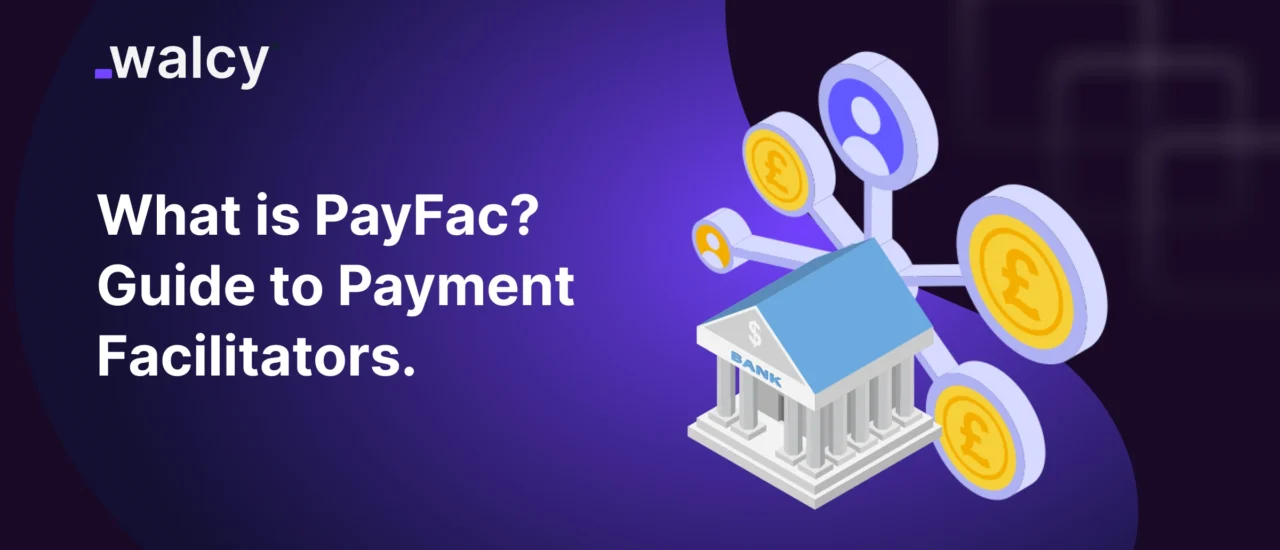As the online payment arena continues to evolve at a breakneck pace, merchants are confronted with ever more competing models of managing payments.
One model that has revolutionized how merchant boarding and payment transaction processing are managed is that of the Payment Facilitator (PayFac) model.
But what is PayFac, and how is it different from a standard payment gateway?
In this guide, we examine the Payment Facilitators at length, their advantages and disadvantages, and how the Payment Facilitators work within today’s economic landscape.
What is the PayFac Model?
A Payment Facilitator (PayFac) is an organization that makes it easy to facilitate businesses to accept payments.
Unlike the traditional schemes in which the merchants used to open their merchant accounts with an acquiring bank, PayFac allows businesses (sub-merchants) to do business under the master merchant account.
This is because it reduces the time, cost, and complexity of onboarding merchants.
PayFacs act as intermediaries between acquiring banks, sub-merchants, and payment processors.
In taking on the underwriting, compliance, and transaction management risk, Payment Facilitators make it simpler for small to medium-sized businesses to accept credit cards and other electronic payments.
How do Payment Facilitators Work?
The PayFac business model is based on several key components:
Master Merchant Account:
An acquiring bank opens a master merchant account with a payment facilitator.
Sub-Merchants:
Independent merchants or companies (sub-merchants) affiliate under the master account of PayFac rather than opening their merchant accounts.
Onboarding:
PayFacs streamline onboarding by utilizing underwriting, Know Your Customer (KYC) screening, and compliance requirements.
Payment Processing:
PayFac handles payment routes from consumers to sub-merchants, with transaction fees owed.
Risk Management:
Payment Facilitators bear the responsibility of fraud protection, chargebacks, and regulatory compliance.
This is a simplified model that allows businesses to start receiving payments easily and efficiently.
Best Payment Facilitator Companies
Several Payment Facilitators have established themselves as among the best, with robust solutions to meet businesses of all shapes and sizes. Some of them are a few industries’ leading brands:
Stripe:
With its developer-friendly APIs, Stripe is one of the leading PayFacs with robust payment processing solutions for online and offline companies.
Square:
Square provides an end-to-end, one-stop-shop solution for small business software tools ranging from business insights to payment acceptance and point-of-sale software.
PayPal:
PayPal, a pioneer in digital payments, facilitates PayFac solutions by way of its Braintree platform to e-commerce merchants and subscription-based services.
Fiserv (formerly First Data):
As long-time payment processing industry professionals, Fiserv provides robust PayFac solutions to platforms and marketplaces.
Adyen:
Adyen’s platform facilitates global payment acceptance using horizontal scaling as well as rich analysis for large enterprises.
Advantages of PayFac
The PayFac model offers numerous benefits, and therefore, it is a preferable option for platforms, marketplaces, and SaaS companies. The major advantages of using a Payment Facilitator are as follows:
Streamlined Onboarding:
PayFacs simplifies the onboarding of merchants using underwriting, compliance, and account establishment. This enables businesses to start accepting payments in hours or days rather than weeks.
Cost-Saving:
Sub-merchants are no longer required to pay the cost of multiple merchant accounts, which is costly. The PayFac model consolidates transactions, and the charges in most instances are less.
Scalability:
PayFacs are ideal for marketplace sites and multi-merchant sites. They can onboard and serve hundreds or thousands of sub-merchants at a relatively minimal charge.
Enhanced Customer and Merchant Experience:
With a seamless, one-click payment experience, PayFacs enhances the merchant experience and customer experience.
Risk Sourcing:
PayFacs takes care of chargebacks, fraud management, and regulatory compliance, freeing the sub-merchants from operational pain.
Revenues Streams:
PayFacs can earn revenues as transactional fees, onboarding fees, and other ancillary services, and become a revenue-generating business model for platforms.
Read about: International Payment Fees | The Essential guide.
Disadvantages of PayFacs
While PayFacs are of immense significance, they also bear obstacles that must be considered by firms before adopting this model. Some of the significant drawbacks are:
Regulatory Compliance Burden:
PayFacs must perform rigorous regulatory compliances like PCI DSS, anti-money laundering (AML) filtering, and know-your-customer (KYC) processes. This makes it more difficult to operate.
Exposure to Risk:
Since PayFacs take chargeback risk as well as fraud transaction risk, they have financially high exposures.
Huge Upfront Investment:
It requires significant investment in technology, tools of compliance, and operational competency to set up PayFac.
Sub-Merchant Complexity:
It requires robust systems as well as the capability to oversee a lot of sub-merchants and transactions, which is something that will perhaps be tricky for new PayFacs to build.
Fee Structures:
Although PayFacs can batch transactions, their fee structures might not be competitive with high-volume sub-merchants who have their merchant accounts.
Key Differences Between Payment Facilitator vs. Payment Gateway
| Feature | Payment Facilitator (PayFac) | Payment Gateway |
| Primary Role | Manages overall payment process, including underwriting, compliance, and risk management | Handles the technical transaction process between customer and merchant |
| Merchant Account | Uses a master merchant account for sub-merchants | Requires each merchant to have their account |
| Relationship Focus | Bank’s interaction with multiple merchants | Customer’s relationship with the merchant |
| Onboarding Process | Quick, as merchants operate under the PayFac’s account | Lengthy, requiring approval from acquiring banks |
| Ideal For | Marketplaces, SaaS providers, platforms with multiple merchants | Businesses need a secure way to transmit transaction data |
| Integration Options | Streamlined integration solutions, often industry-specific | Offers many integration options like API, plugins |
When to Use a PayFac Model
The PayFac model is best suited for companies that:
- Have a platform, marketplace, or Software-as-a-Service provider with numerous service providers or merchants.
- Prefer to streamline and simplify the merchant onboarding and payment processing experience.
- Prefer to generate incremental revenue from transaction fees or value-added services.
- Can invest in risk management, technology infrastructure, and compliance.
How Does Payfac Make Money?
A Payment Facilitator (PayFac) makes money by placing itself between a merchant and the payment processors. The major sources of revenue for PayFac are:
Transaction Fees:
PayFacs take a charge on every transaction. It’s usually a percentage of the transaction and a flat fee. They can take a different charge on different transactions, i.e., credit card payment and ACH.
Monthly/Setup Charges:
PayFacs levy a monthly charge on the use of their platform, payment gateway, or any other function. They levy setup charges as well on the merchants who are fresh entrants to the platform.
Markup on the Processing Charges:
PayFacs negotiate with payment processors (third party, Visa, or MasterCard) and add a markup to processing fees. Where a percentage is charged by the processor, PayFac retains some portion of it.
Chargeback Fees:
If there are chargebacks (chargebacks/disputed transactions), then they can be levied by PayFac dispute processing fee. The charges are a cumulation, especially for those highly at-risk merchants.
Value-Added Services:
PayFacs commonly provide value-added services such as fraud protection, analytics, reporting, and recurring billing functionality. They might also charge extra for these add-on features or bundle them as included in their pay plans.
Such diverse streams of revenue allow PayFacs to have stable revenue in addition to supplying efficient payment options to companies of varying sizes.
Components of Payment Facilitator Ecosystem
The PayFac ecosystem involves several key components working together to facilitate seamless payment processing. Here’s a breakdown:
Acquiring Bank (or Merchant Bank):
A bank holding the master merchant account of PayFac. They settle with the Payment Facilitator. They speak to card networks.
Payment Facilitator (PayFac):
The sponsor firm. They acquire a master merchant account, board sub-merchants, manage risk, and pass-through transactions. They are the record merchants of the acquirer.
Sub-Merchants (or Merchants):
The merchants who accept PayFac’s platform to receive payments from their customers. They are boarded by PayFac and appear under the master merchant account of PayFac.
Payment Processor:
A company that takes care of the technical processing of payment. They settle and clear payments, authorize transactions and provide connectivity to the card networks. PayFac may be their processor but usually, it will be in association with one.
Sponsor:
The company that enables PayFac to be linked to the card networks and receive transactions. The sponsor is the connection point to the card networks.
Sponsors are acquiring banks, payment processors, or a unique hybrid company offering acquiring and processing.
Conclusion
The Payment Facilitator model has revolutionized payment processing in business to the extent that it is now easier for platforms to get paid and merchants to get paid.
PayFacs are not lacking in operational complexity and regulatory challenges, but with their advantages of scalability, excellent user experience, and affordability, they are attractive to modern businesses.
The Payment Facilitator model still evolves, giving businesses an easy way of accepting payments and processing transactions.
As the world becomes more digital with payments, PayFacs will remain at the forefront of enabling easy and secure payment processes and hence be a future commerce leader.
By leveraging the PayFac model, businesses can position themselves for long-term success as the world becomes more cashless.
Read about: All About Overseas Payments (2025) Comprehensive Guide
FAQs
What distinguishes PayFac from an Independent Sales Organization (ISO) or a Payment Processor?
By acting as a middleman between payment processors and merchants, PayFac (Payment Facilitator) enables companies to take payments using a single master account.
The technical aspects of transactions are managed by a payment processor, whereas ISO offers payment services to processors without actually processing payments.
What does the PayFac model do to small businesses?
The PayFac model simplifies payment acceptance for small businesses by allowing them to onboard easily, process payments, and handle compliance without a traditional merchant account.
Which sectors are most affected by PayFac solutions?
ECommerce, SaaS, marketplaces, and subscription-based businesses are most affected by PayFac solutions due to easy onboarding, simplified payment management, and scalable growth.
What are the main compliance requirements of PayFacs?
PayFacs need to comply with PCI DSS (Payment Card Industry Data Security Standard), AML (Anti-Money Laundering) regulations, KYC (Know Your Customer) regulations, and other financial regulations to ensure security and prevent fraud.
What is the difference between a PayFac and a PSP in terms of merchant onboarding and relationship management?
PayFac (Payment Facilitator) is a complete solution where merchants are allowed to process through its master account, while a PSP (Payment Service Provider) provides the utilities and services to accept payments but processes not the entire merchant relationship but neither the underwriting.
Do follow us on Facebook and LinkedIn, to stay connected with us.



